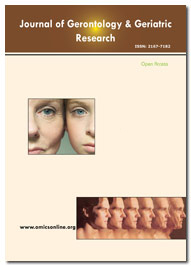索引于
- 打开 J 门
- Genamics 期刊搜索
- 安全点亮
- 参考搜索
- 哈姆达大学
- 亚利桑那州EBSCO
- OCLC-WorldCat
- 普布隆斯
- 日内瓦医学教育与研究基金会
- 欧洲酒吧
- 谷歌学术
分享此页面
期刊传单

抽象的
Hospitalization and Mortality Rates in Patients with Respiratory Diseases in the Very Elderly Population
Özlem Oruç*, Tutku Moralı, Zühal Karakurt, Selahattin ÖztaÅ, Baran GündoÄuÅ, Cüneyt Saltürk, Feyyaz Kabadayı, Fatma Tokgöz, Hasan Özgen, Pınar Atagün Güney, Döndüye Özgül and Hatem KonaÅoÄlu
Background: Advanced technologies and treatments continue to increase life expectancy, however, the hospital mortality rate of elderly patients with respiratory diseases remains unclear. In this study, we aimed to demonstrate the changing frequencies of hospitalized elderly patients with respiratory diseases and their mortality rates over time. Methods: A retrospective observational cohort study was performed in a tertiary training hospital using data from a 7-year period (2008-2014). The characteristics and hospital outcomes of patients ≥80 years old was collected from an electronic hospital database system. The frequency of elderly patients with respiratory diseases and their mortality rates for each year were assessed. Results Overall, 9.6% (10,782) of patients were ≥80 years old . Their mean age was 84 (80- 114) years with a slight male predominance (52.6%). The median length of hospital stay was 8 (5-11) days. The frequency of elderly patients gradually increased: 6.5%, 6.0%, 7.2%, 8.5%, 10.9%, 13.6%, and 15.5% for 2008 to 2014, respectively. Importantly, mortality rates did not significantly increase over time (7.4%, 6.9%, 7.7%, 8.3%, 7.6%, 8.3%, and 8.0% respectively). The mean mortality rate for all 7 years was 7.8% (n = 843), and the mean age of non-survivors was 84 (±4) years. Conclusion: The frequency of hospitalized elderly patients has increased, but mortality rates have remained flat. The Ministry of Health and hospital directors should consider planning palliative care through special hospital units to improve the quality of life of elderly patients.